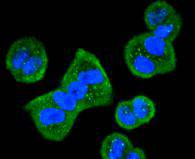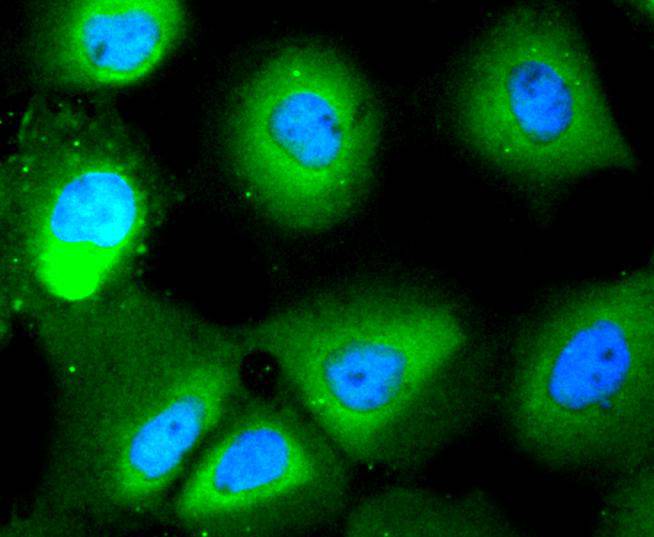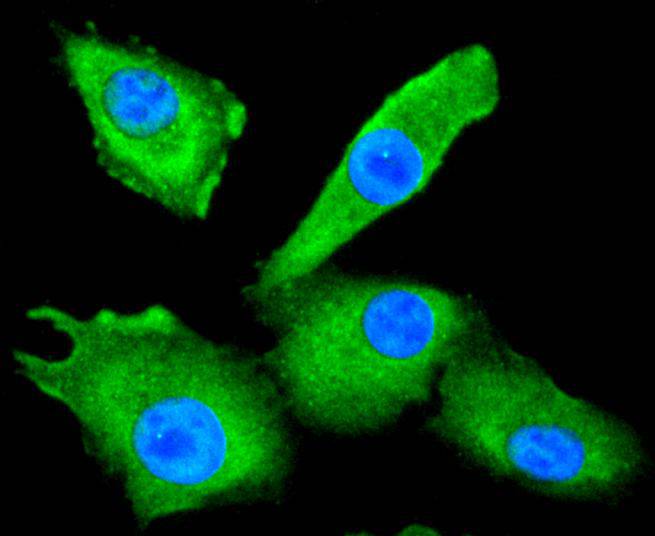Histone deacetylases (HDACs) play an important role in the modification of chromatin structure and thus in the suppression and activation of transcription and cellular differentiation. There are 11 members in the HDAC family that are divided into four classes. Class I HDACs represent homologs of the yeast histone deacetylase Rpd3, class II HDACs share strong homology with the yeast histone deacetylase Hda1, class III HDACs are closely related to the yeast Sir2 protein and class IV HDACs comprise histone deacetylase 11 (HDAC11)-related enzymes. HDAC10, also known as HD10, is a member of the class II HDACs. It contains an N-terminal Hda1p-related catalytic domain and a unique C-terminal leucine-rich domain. HDAC10 is ubiquitously expressed and can shuttle between the cytoplasm and nucleus in response to celllular signals. It is able to repress transcription and, like other class II HDAC members, its enzymatic activity is inhibited by Trichostatin A (TSA).




